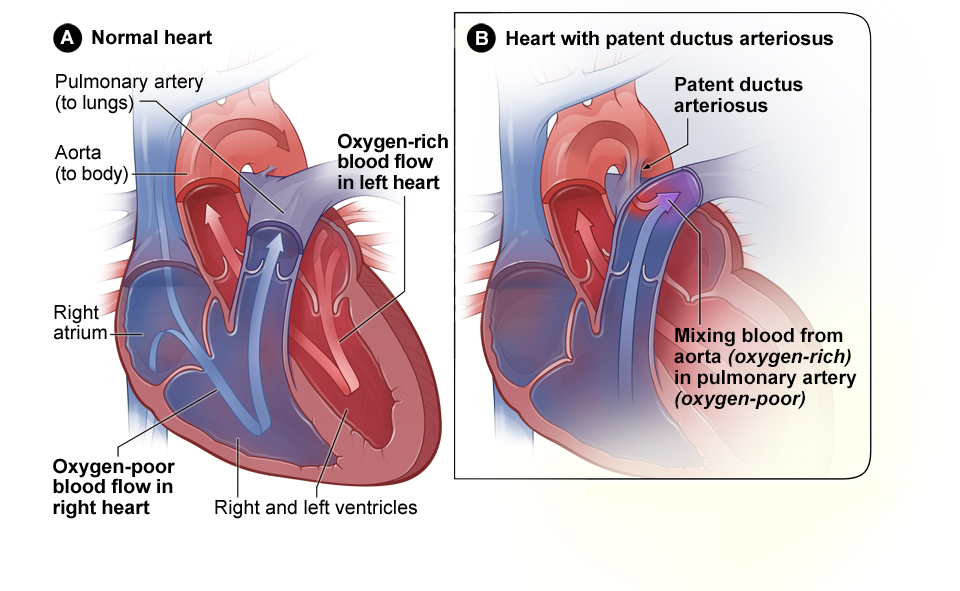Congenital Heart Defects Types
There are many types of heart defects. They range from simple to complex and critical.
- Simple defects may get better on their own without surgery. Sometimes, a baby with a simple defect will not have any . Examples of simple heart defects include atrial and ventricular septal defects, patent ductus arteriosus, and pulmonary .
- Complex and critical defects may cause life-threatening symptoms that require immediate treatment. An example of a critical heart condition is the Tetralogy of Fallot. Babies born with this or another critical congenital heart defect typically have low levels of soon after birth and need surgery within the first year of life.
Atrial septal defect
An atrial septal defect is a hole in the wall of the heart between the left and right atria, which are the two upper chambers of the heart. The hole causes blood to flow from the left atrium and mix with the right atrium, instead of going to the rest of the body. An atrial septal defect is considerered a simple congenital heart defect because the hole may close on its own as the heart grows during childhood.

Ventricular septal defect
A ventricular septal defect is a hole in the wall between the left and right ventricles, which are the two lower chambers of the heart. Blood may flow from the left ventricle and mix with blood in the right ventricle, instead of going to the rest of the body. If the hole is large, the heart and lungs may need to work harder to pump blood. In addition, it may cause fluid to build up in the lungs.

Patent ductus arteriosus
This common type of simple congenital heart defect occurs when a connection between the heart’s two major arteries, the and the pulmonary artery, does not close properly after birth. This leaves an opening through which blood can flow when it should not. In many cases, small openings may close on their own.

Pulmonary stenosis
Pulmonary stenosis is a type of heart valve disease in which the pulmonary valve is too narrow or stiff. This affects how well blood can move from the heart to the pulmonary artery, the blood vessel that connects the heart to the lungs. Many children with pulmonary stenosis do not need treatment.
Tetralogy of Fallot
Tetralogy of Fallot is the most common complex congenital heart disorder and is a combination of four defects:
- Pulmonary
- A large ventricular septal defect
- An overriding aorta. With this defect, the major blood vessel that carries blood to the body (aorta) is out of place. Instead of being above the left , it is located between the two ventricles. As a result, -poor blood from the right ventricle can flow directly into the aorta instead of into the blood vessel that carries blood to the lungs (pulmonary artery)
- Right ventricular hypertrophy is when the heart has to work harder than normal which makes the muscle of the right ventricle thicker than normal

Other critical congenital heart defects
There are other types of critical congenital heart defects including:
- Coarctation of the aorta
- Double-outlet right ventricle
- D-transposition of the great arteries
- Ebstein’s anomaly
- Hypoplastic left heart syndrome
- Interrupted aortic arch
- Pulmonary atresia with intact ventricular septum
- Single ventricle
- Total anomalous pulmonary venous return
- Tricuspid atresia
- Truncus arteriosus

